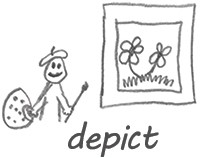Vocabulary knowledge is fundamental to academic and personal success. But How Is Vocabulary Learned effectively? This article delves into the science behind vocabulary acquisition, exploring various learning strategies and highlighting the importance of a multifaceted approach.
Early Vocabulary Development: A Foundation for Learning
Young children primarily learn vocabulary indirectly by listening to others speak and read, then using these words in their own conversations. As they progress to reading and writing, they encounter and internalize new words through comprehension. However, significant variations exist in early vocabulary development. A language-rich environment, diverse experiences, and early exposure to reading contribute to a robust vocabulary. Conversely, limited verbal interaction, fewer experiences, and reluctance toward reading can hinder vocabulary growth. This initial gap can widen without intervention.
The Impact of Vocabulary on Reading Comprehension
Research consistently demonstrates a strong correlation between vocabulary and reading comprehension. Students with limited vocabularies often struggle with comprehension, while those with strong vocabularies excel. Vocabulary acts as a cornerstone for understanding text, enabling students to decode meaning and make connections. This link becomes increasingly crucial as students encounter more complex and abstract language in higher grades. A phenomenon known as “the fourth-grade slump” highlights how inadequate vocabulary can lead to significant declines in reading comprehension around this grade level.
Incidental vs. Intentional Vocabulary Learning: A Two-Pronged Approach
Closing the vocabulary gap requires a balanced approach incorporating both incidental and intentional learning.
Incidental Learning
Incidental learning occurs naturally through exposure to language in various contexts, such as conversations, read-alouds, and independent reading. Extensive reading is particularly beneficial, providing repeated encounters with words in meaningful contexts, reinforcing their meaning and usage.
Intentional Learning
Intentional learning involves explicit instruction in vocabulary and word-learning strategies. This includes:
- Rich Instruction: In-depth teaching of specific words crucial for understanding texts.
- Word-Learning Strategies: Equipping students with tools to independently decipher unfamiliar words.
- Word Consciousness: Fostering an appreciation for words and their nuances through engaging activities.
Effective Vocabulary Learning Strategies: A Deeper Dive
Several research-supported strategies promote effective vocabulary acquisition:
- Student-Friendly Definitions: Explaining word meanings in accessible language rather than relying solely on dictionary definitions.
- Contextual Learning: Introducing new words within the context of a sentence or passage, enhancing understanding and retention.
- Context Clues: Utilizing surrounding words and phrases to infer the meaning of unfamiliar words.
- Sketching: Creating visual representations of word meanings to aid memorization and personalize learning.
- Word Application: Encouraging students to use new words in different contexts to solidify understanding.
- Analyzing Word Parts: Breaking down words into roots, prefixes, and suffixes to decipher their meanings.
- Semantic Mapping: Visually organizing words and their relationships to enhance comprehension and connections.
Fostering Word Consciousness: Beyond Isolated Lessons
Word consciousness, an active interest in and awareness of words, is crucial for vocabulary development. Creating a word-rich classroom environment with access to diverse language resources, such as dictionaries, thesauruses, and word games, is essential. Teachers can further cultivate word consciousness by:
- Exploring language categories like synonyms, antonyms, and homographs.
- Examining figurative language, including similes, metaphors, and idioms.
- Encouraging students to identify and analyze these language elements in various subjects.
Conclusion: A Holistic Approach to Vocabulary Acquisition
Effective vocabulary learning requires a comprehensive approach that combines incidental and intentional learning, employs diverse strategies, and cultivates word consciousness. By empowering students with the tools and motivation to learn new words, we unlock their potential for academic success and lifelong learning. While specific programs like Read Naturally’s “Take Aim at Vocabulary” can provide structured support, a consistent focus on vocabulary across all learning environments is paramount.
